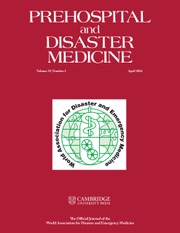No CrossRef data available.
Article contents
Enhancing KDRT’s Administration and Organizational Management through SWOT Analysis: A Systematic Review
Published online by Cambridge University Press: 21 May 2025
Abstract
The Korea Disaster Relief Team (KDRT) plays a crucial role in international humanitarian assistance and disaster relief. Effective administration and organizational management are vital for the success.
This study compares KDRT’s administration and organizational management with other emergency medical teams (EMTs) through a comprehensive literature review, ultimately providing recommendations to strengthen KDRT’s framework.
Using PRISMA methodology, a comprehensive literature search was conducted across major databases including PubMed, EMBASE, Cochrane Library based on their relevance to EMT initiatives, administration and organizational management, and disaster response strategies. Articles were analyzed to identify governance structures, defined roles and responsibilities, and regular organizational evaluations with SWOT analysis.
Out of 20,343 articles, 18 were selected. The review identified key aspects of effective administration and organizational management in EMTs, including clear governance structures, well-defined roles, and continuous evaluations. For articles not included in the KDRT system, the SWOT analysis revealed strengths such as local knowledge (Japan), strong frameworks (USA), and clear funding strategies (Finland). Weaknesses included limited scalability (Japan), bureaucratic delays (USA), and funding limitations (Finland). Opportunities were found in community engagement (Japan), streamlined processes (USA), and increased donor engagement (Finland), while threats included policy misalignment (Japan), administrative burdens (USA), and financial instability (Finland).
This study highlights the need to reinforce KDRT’s administration and organizational management to improve its disaster response efficiency. Recommendations include improving resource allocation, integrating local knowledge, simplifying processes, diversifying funding, and enhancing transparency. By addressing these areas, KDRT can enhance its capability to provide effective humanitarian assistance and disaster relief internationally.
Information
- Type
- Meeting Abstracts
- Information
- Copyright
- © The Author(s), 2025. Published by Cambridge University Press on behalf of World Association for Disaster and Emergency Medicine


